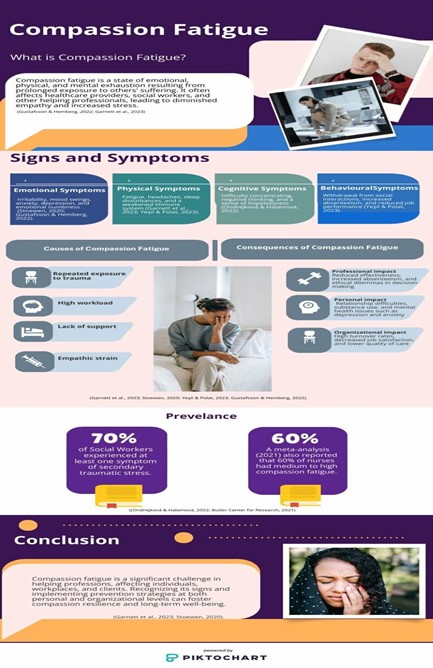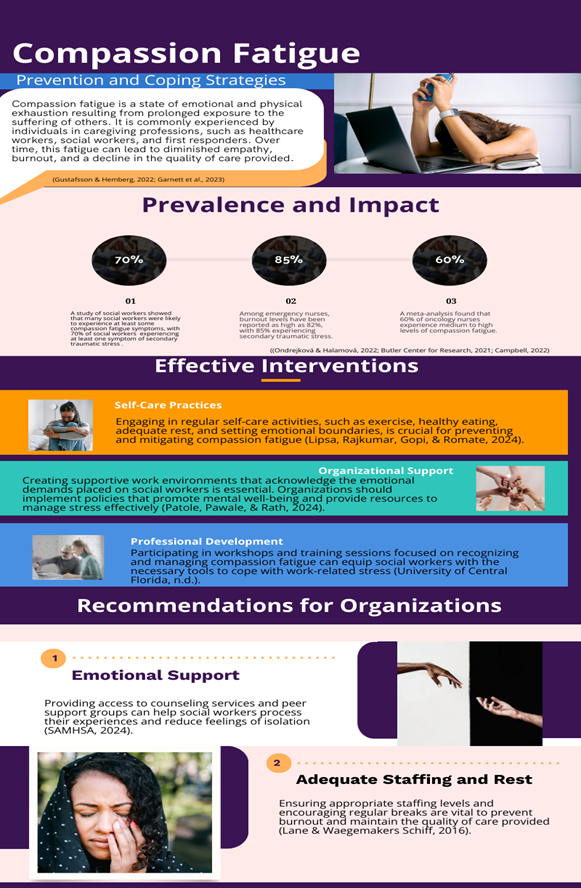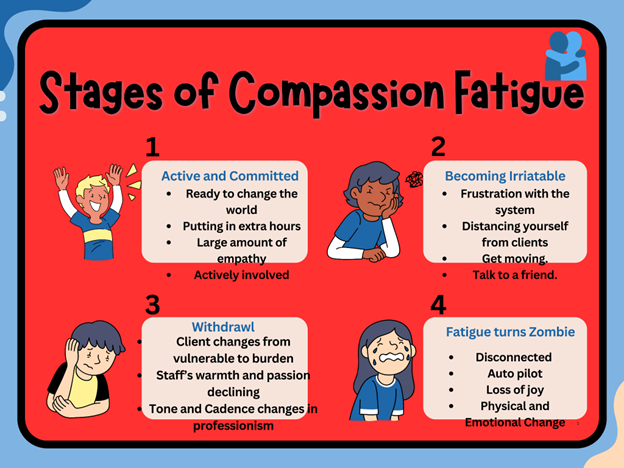This infographic provides an overview of compassion fatigue, its prevalence, effective coping strategies, and organizational recommendations for prevention and support.
Header: Compassion Fatigue
Subheading: Prevention and Coping Strategies
Definition:
Compassion fatigue is described as emotional and physical exhaustion from prolonged exposure to others’ suffering. It often affects individuals in caregiving professions such as healthcare workers, social workers, and first responders. It can lead to reduced empathy, burnout, and a decline in quality of care.
(Sources: Gustafsson & Hemberg, 2022; Garnett et al., 2023)
Section: Prevalence and Impact
Includes three circular icons with statistics:
- 70% – A study showed that 70% of social workers experienced at least one symptom of compassion fatigue. (Bride, 2007)
- 85% – Among emergency nurses, 85% reported compassion fatigue symptoms. (Young et al., 2011)
- 60% – A meta-analysis found 60% of participants reported moderate to high levels of compassion fatigue. (Hooper et al., 2010)
(Sources: Condrey & Halmova, 2022; Butler Center for Research, 2021; Campbell, 2022)
Section: Effective Interventions
Three colour-coded blocks explain intervention strategies:
- Self-Care Practices (Yellow):
Regular self-care (e.g., exercise, healthy eating, rest, and emotional boundaries) helps prevent compassion fatigue. (Lipsa, Rajkumar, Gopi, & Romate, 2024) - Organizational Support (Teal):
Organizations should foster environments that support mental well-being and provide resources for stress management. (Patole, Pawale, & Rath, 2024) - Professional Development (Blue):
Training and workshops on recognizing and managing compassion fatigue can prepare workers to manage stress effectively. (University of Central Florida, n.d.)
Section: Recommendations for Organizations
- Emotional Support (Purple Box):
Offer counseling services and peer support programs to help workers process their experiences and reduce isolation. (SAMHSA, 2024) - Adequate Staffing and Rest (Orange Box):
Maintain appropriate staffing levels and ensure regular breaks to avoid burnout and sustain care quality. (Lane & Waegemakers Schiff, 2016)
Visual Style:
The infographic uses a clean and colourful layout, including photos of emotional exhaustion, caregiving, and comforting gestures. Bright colour blocks help distinguish each strategy and section. Designed to inform care providers and organizations about addressing compassion fatigue




